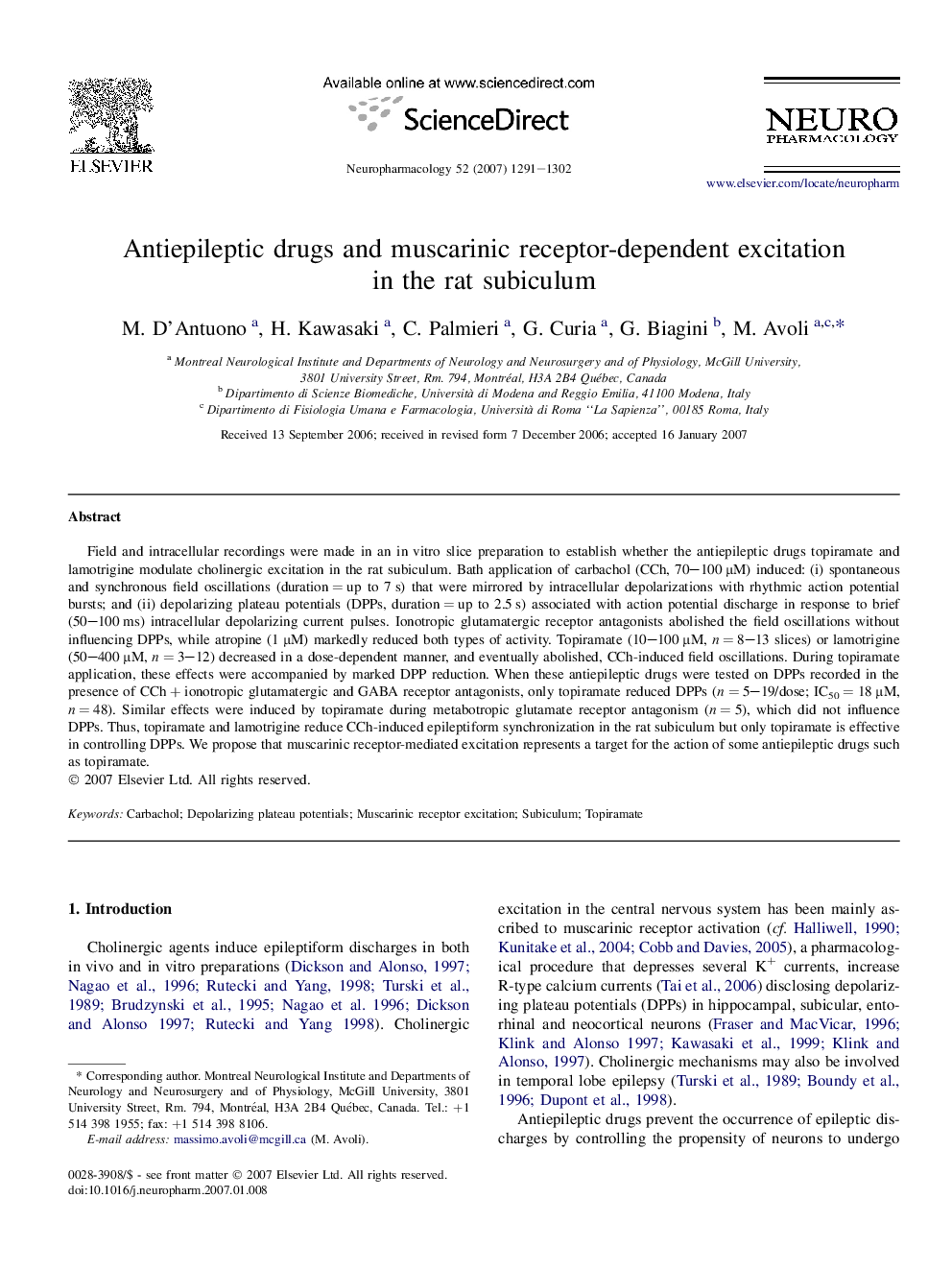| Article ID | Journal | Published Year | Pages | File Type |
|---|---|---|---|---|
| 2495242 | Neuropharmacology | 2007 | 12 Pages |
Abstract
Field and intracellular recordings were made in an in vitro slice preparation to establish whether the antiepileptic drugs topiramate and lamotrigine modulate cholinergic excitation in the rat subiculum. Bath application of carbachol (CCh, 70-100 μM) induced: (i) spontaneous and synchronous field oscillations (duration = up to 7 s) that were mirrored by intracellular depolarizations with rhythmic action potential bursts; and (ii) depolarizing plateau potentials (DPPs, duration = up to 2.5 s) associated with action potential discharge in response to brief (50-100 ms) intracellular depolarizing current pulses. Ionotropic glutamatergic receptor antagonists abolished the field oscillations without influencing DPPs, while atropine (1 μM) markedly reduced both types of activity. Topiramate (10-100 μM, n = 8-13 slices) or lamotrigine (50-400 μM, n = 3-12) decreased in a dose-dependent manner, and eventually abolished, CCh-induced field oscillations. During topiramate application, these effects were accompanied by marked DPP reduction. When these antiepileptic drugs were tested on DPPs recorded in the presence of CCh + ionotropic glutamatergic and GABA receptor antagonists, only topiramate reduced DPPs (n = 5-19/dose; IC50 = 18 μM, n = 48). Similar effects were induced by topiramate during metabotropic glutamate receptor antagonism (n = 5), which did not influence DPPs. Thus, topiramate and lamotrigine reduce CCh-induced epileptiform synchronization in the rat subiculum but only topiramate is effective in controlling DPPs. We propose that muscarinic receptor-mediated excitation represents a target for the action of some antiepileptic drugs such as topiramate.
Keywords
Related Topics
Life Sciences
Neuroscience
Behavioral Neuroscience
Authors
M. D'Antuono, H. Kawasaki, C. Palmieri, G. Curia, G. Biagini, M. Avoli,
